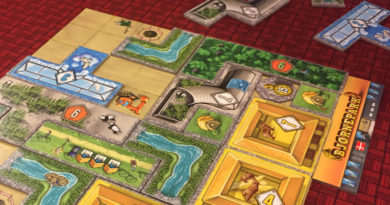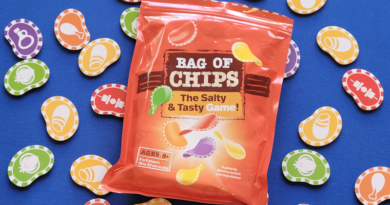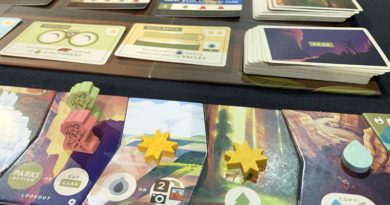Horizon Zero Dawn: The Board Game review
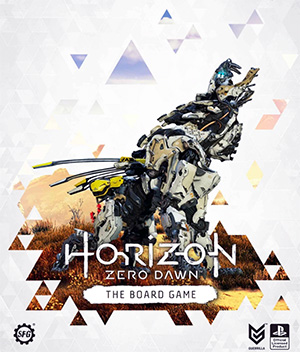
In 2017, Guerrilla Games developed and Sony published a Playstation 4 video game that’s set in a world overrun by machines call Horizon Zero Dawn. As of February 2022, the video game has sold over 20 million copies–making it one of the best-selling PlayStation 4 games.
Because of its huge success, Steamforged Games brought the video game to life in board game form in 2020.
In Horizon Zero Dawn: The Board Game, players band together to form a hunting party to take down the rampant machines.
Over the course of multiple encounters, players will level up their hunters with new skills and upgrade their equipment to become even stronger before they face the final encounter against the Sawtooth.
How to play Horizon Zero Dawn: The Board Game
Horizon Zero Dawn: The Board Game can be played as either completely cooperative or a semi-cooperative. In the semi-cooperative version, players still band together to take down the machines, but one player will be crowned the victor based on whoever claims the most victory points through their hunting prowess.
But in either case, the goal of the game is to knock out the machines.
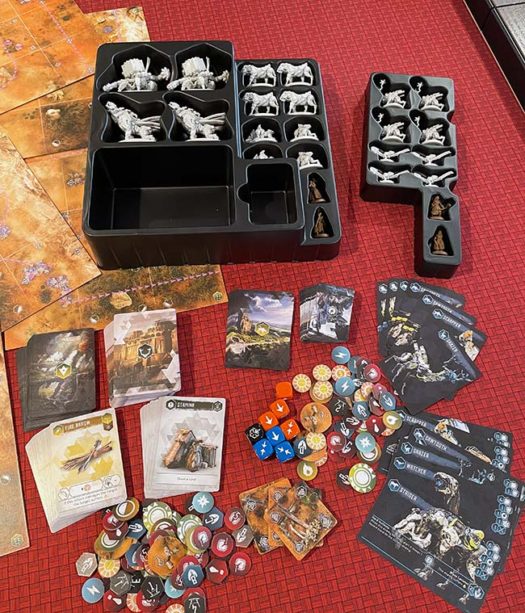
Set up
To begin, each players chooses one of the 4 characters and takes that character’s profile card, starting equipment cards, starting resources, and action deck of cards. They place their starting equipment around their character card – showing what weapons they’ll be able to use during the game.
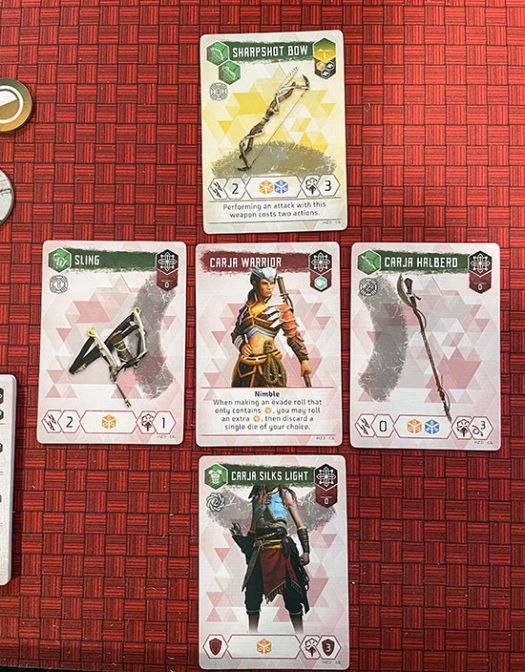
The players then choose a quest. Quests are identified by the picture of the machine on the back of the tracking cards which represents the enemy they’ve been charged with hunting down. For the base game, the main enemy will always be the Sawtooth. But the players will track it down differently each game.
A game consists of 5 encounters which increase in difficulty. The game board layout of each encounter is determined by the tracking cards. These tracking cards also detail where the enemies begin on the boards and any special terrain.
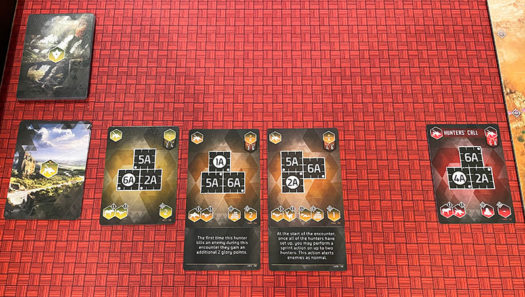
Once an encounter is set up based on the tracking card, players take turns placing their characters on the board. Then players shuffle their action deck and draw up to their maximum hand size of 5 cards.
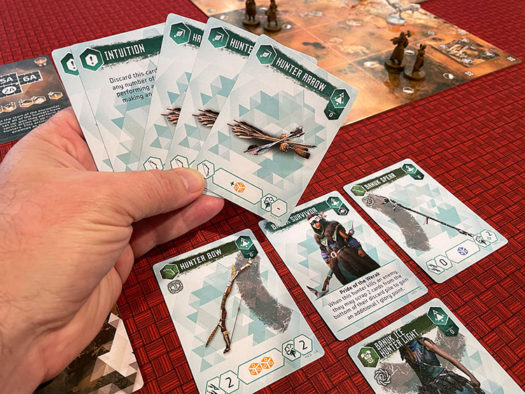
Player Turns
Players take turns activating their hunter, activating the enemies, then doing a maintenance step.
For their hunter activation, they may perform 2 actions (each may only be done once):
- Sprint: Move up to 2 squares in any direction, including diagonally. Enemies in adjacent squares to any of this movement becomes alert.
- Sneak: Move up to 1 square in any direction.
- Craft: Take 3 cards from the bottom of their discard pile and shuffle them back into their deck.
- Distract: Move a non-alert enemy within 2 spaces of their character 1 square towards the target square.
- Ranged Attack: Resolve an attack using one of their equipped ranged weapons.
- Melee Attack: Resolve an attack using one of their equipped melee weapons.
When attacking an enemy, the player may declare that they’re either attacking the enemy or a component on the enemy machine. They will play cards from their hand that work with the weapon being used and roll the combined dice indicated from the weapon and ammo cards played. Then they’ll compare their dice results with the enemy’s armor and health points to see how much damage they do.
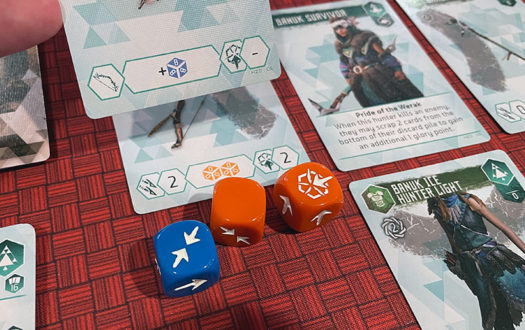
When players destroy an enemy, they get glory points for that enemy (listed on the machine cards).
After a player takes their turn, all the enemy figures activate. Alert enemies will activate first and enemies closest to the just activated player will also go first.
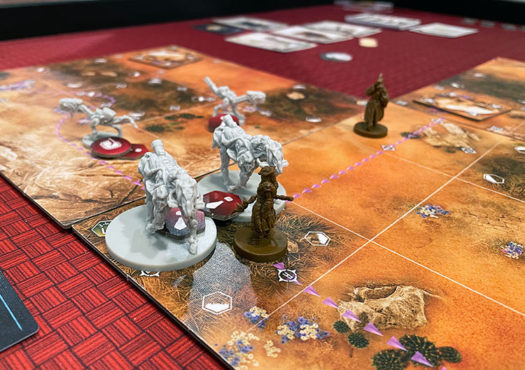
When alert, the enemy machine uses its behavior card to determine how it activates. These will include things such as movement and attacking and will differ depending on the type of machine. As you might expect, some machines also have special actions. Some actions on an enemy’s card may only be done if the enemy still has that component. If a player has destroyed that component, that ability won’t take effect.
Non-alert enemies will move 1 space along their patrol routes (purple arrow pathways). If the enemy moves off the board, they will not return to play. While you may think this is a good thing, it’s not – because it means there are now less points available for players to capture by taking out the enemies.
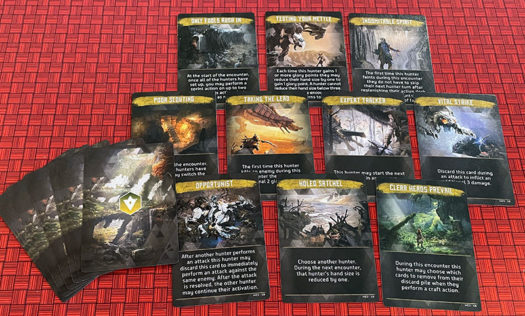
After the enemy activation, players performs a maintenance step. This is essentially a check to see if the encounter has ended. If the combined total of characters fainting is equal to or greater than the number of players, the encounter ends in failure.
To be successful, players must collectively accumulate a number of encounter points equal to or greater than what’s listed on the tracking card for that encounter.
If neither of those conditions are reached, the next player takes their turn.
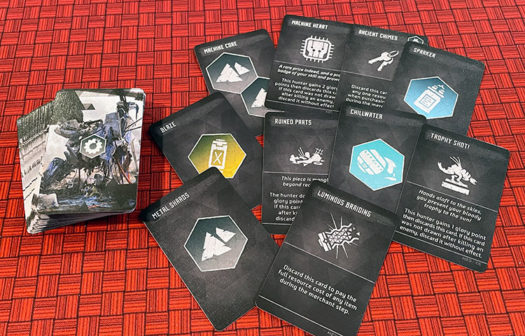
Encounter End – Campfire Phase
Once an encounter ends, players move on to the Campfire phase. During this phase, players are awarded Sun tokens based on how well they did. The player with the most glory gets a Blazing Sun token and gets the Leader token. Others may get a Full Sun or Half Sun. The player with the least glory from the encounter gets the Fledgling token (for the next encounter).
Next, players level up their characters. Each character has a unique Skill Tree that they will progress along. These will add new cards to their action deck or upgrade some of their equipment.
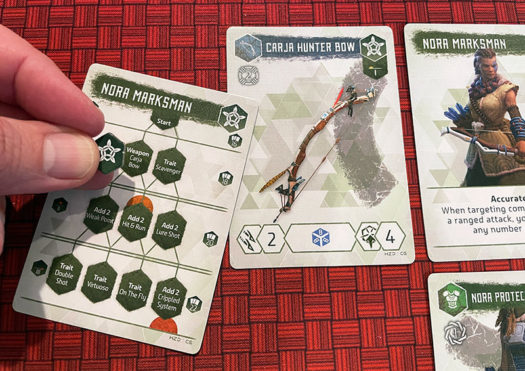
If a player has less cards in their action deck than their maximum allowed, they add Stamina cards to their deck.
Lastly, players spend resources to purchase from the Merchant deck. These will also increase character abilities for future encounters.
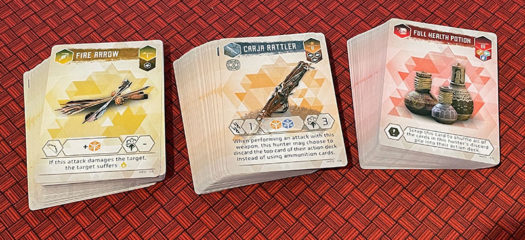
End game
Once players have gone through the 5 tracking cards for their series of encounters, players total up their victory points based on their accumulated sun tokens over the course of the game (multiple encounters). The player with the most points wins.
In the fully cooperative version of the game, players don’t total points. Instead, if the players successfully completed the final encounter, they all win as a team.
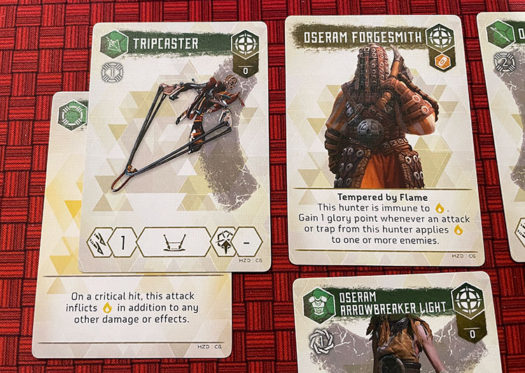
Can the whole family enjoy Horizon Zero Dawn?
Horizon Zero Dawn: The Board Game was clearly made for fans of the video game.
When we first dove into playing Horizon Zero Dawn the Board Game, only 1 of the 4 of us had played the video game. The first few rounds took us a while to play through because we were frequently referencing the rulebook to make sure we were playing correctly and answering questions that came up as we faced different situations. By the end of our first encounter, we were finally feeling like we had a handle on the game and we all had a fun time.
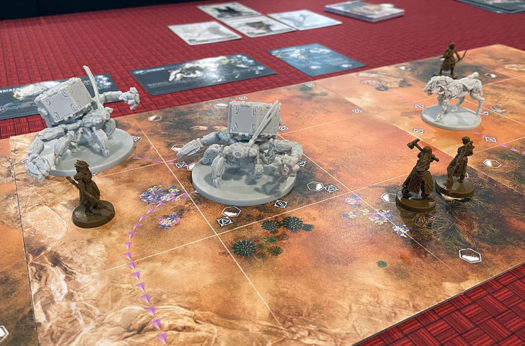
Since that first play, however, I’ve borrowed a friend’s PS4 and have logged about 30 hours of video game play time over the last few months.
And I can now say that playing the video game has made a huge difference in getting into the board game even more!
Every aspect of the board game now makes much more sense to me and feels more intuitive. I can see the details that went into the components and game play elements and greatly appreciate them. For example:
- How the equipment (weapons, armor) surround the character card with the shaded arc – just like how they’re selected to use in the video game.
- The machine miniatures are spot on.
- All the symbols and icons peppered throughout.
- The purple pathways printed on the terrain boards – just like highlighting the machine tracks in the video game.
- Attacking either components on enemy machines or the machines themselves.
- Adding modifications to equipment through coils and weaves.
- Why and how players evade and dodge after attacks.
- Using the tall grass to stay hidden and/or sneak up on enemies.
- Leveling up abilities through a skill tree.
- Why there’s a Campfire Phase after an Encounter – because campfires are the locations in the video game where you save your progress.
- And I know what it’s like going up against these formidable machines for the first time and getting knocked down again and again.
The list could go on and on.
Let’s just say I’ve become a converted fan of the video game.
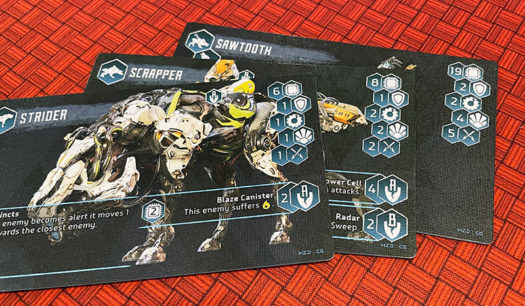
Which is also why it’s clear to us that the board game is highly tailored to fans of the video game. (Which is a huge target audience.)
That being said, even when I wasn’t familiar with the video game, I enjoyed the encounters we played.
We like having multiple weapons and equipment to use. We like the combination of using cards from your deck and rolling dice. And we like trying to take out enemies before they become alert. Because once they become alert, they seek their vengeance.
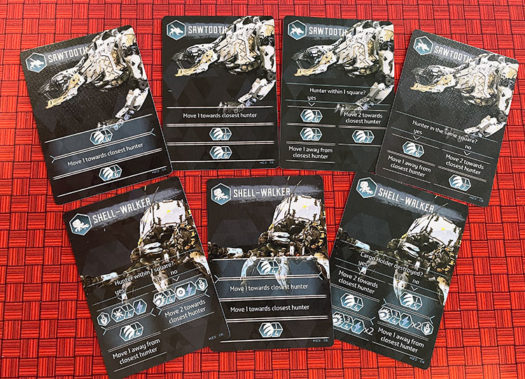
We also like being able to knock off components from the machines to reduce their capabilities when they fight back.
And the fact that if machines leave the board, they don’t come back encourages us to jump right into the hunt immediately. We can’t sit around and wait because we’ll miss our chance at glory.
The double-sided boards are also well done because the different sides are used for different player counts. That’s a nice way to adjust the play.
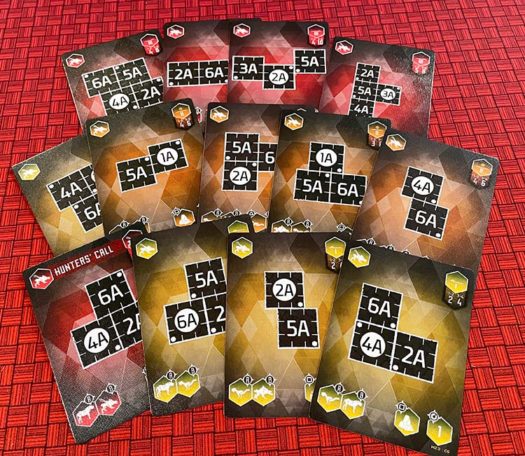
However, we really don’t like the double-sided Full and Half Sun tokens.
The Blazing Sun tokens are the same on both sides. So when we claim one, it stands out well. But with the others, if we claim a Full Sun, we take the token and then have to keep it Full Sun side up. Which is okay if we play through all 5 encounters in one setting. However, if we just don’t have that much time, we put our character cards and tokens in baggies to keep until we can play again. Then when we play again and take our stuff out of our baggies, we can’t recall if we had Full or Half Suns. Since those tokens are double-sided, they’re easy to mix up.
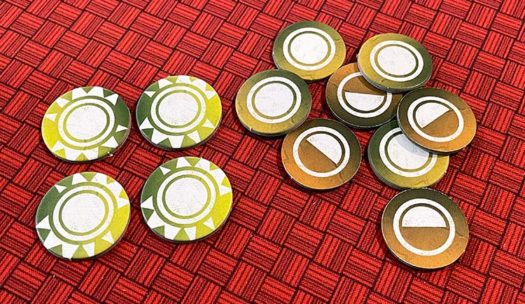
The main way to play is the semi-cooperative mode. However, we actually favor the fully cooperative way instead.
That’s mostly because of how much you lose if your character faints in battle.
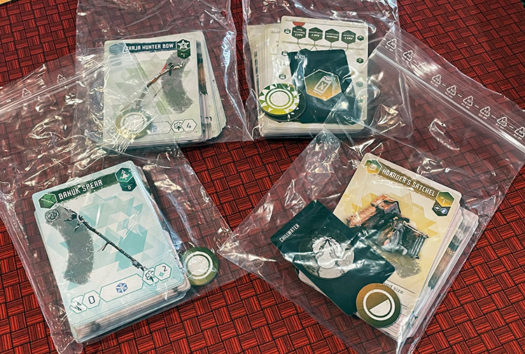
When a player takes damage, they discard cards from their action deck. When they run out of cards, they faint. And when they faint, they lose all their glory gained up to that point. And when there are only a handful of machines to slay during an encounter, losing all your glory points means you don’t have a chance to win the encounter and get a blazing sun. Plus, it also means your next turn will be skipped. So you’re really hosed.
So unless you’re going to completely take out an enemy machine, you need to tread carefully. After all, why whittle one down for another player to swoop in and complete the kill and get all the glory? (plus putting yourself at risk of fainting)
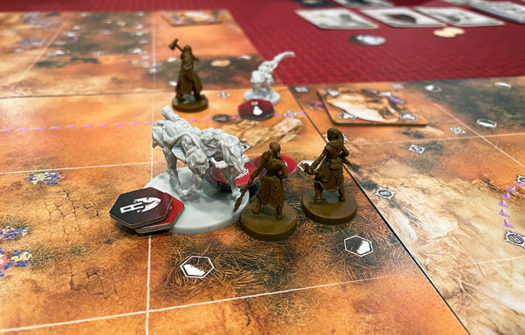
Game Expansions
As you can imagine with a board game based on an epic video game, they just can’t fit all the cool stuff into one game box.
And you’d be right.
There are expansions!
But because this review is such a long one already, we’ll save our review of the expansions for our next post. Stay tuned.
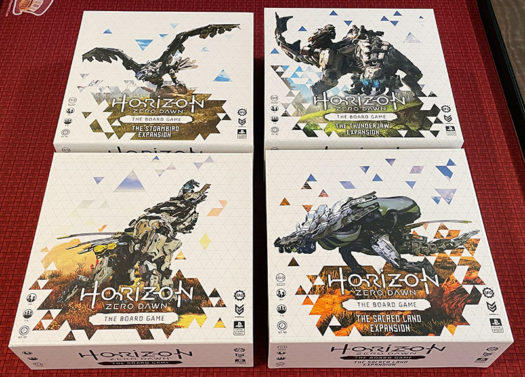
How does Horizon Zero Dawn: The Board Game score on our “Let’s Play Again” game meter?
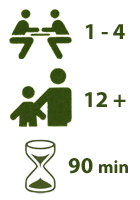 Horizon Zero Dawn: The Board Game is a fun combat game that comes to life more for those who are familiar with the video game. As such, our “let’s play again” game meter is a mixed bag for our crew. We get big thumbs up from some and less enthusiasm from others.
Horizon Zero Dawn: The Board Game is a fun combat game that comes to life more for those who are familiar with the video game. As such, our “let’s play again” game meter is a mixed bag for our crew. We get big thumbs up from some and less enthusiasm from others.
There’s a lot of little rules to remember while playing, so repeat plays is a very good thing. And we haven’t yet played all 5 encounters of a game in one sitting. Which means that it naturally pulls us back to play more.
However, that also means that sometimes we end playing without feeling complete – because we haven’t faced off against the final enemy.
So while it gets a mixed score on our “let’s play again” game meter, for those in our group that enjoy it, it’s definitely going to see a lot more plays.
We’d like to thank Steamforged Games for review copies of Horizon Zero Dawn: The Board Game and expansions.



